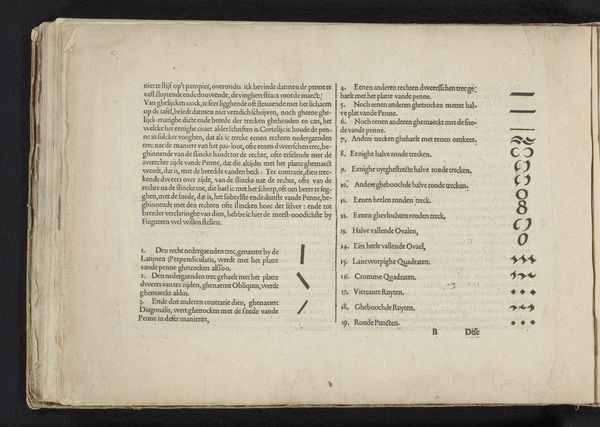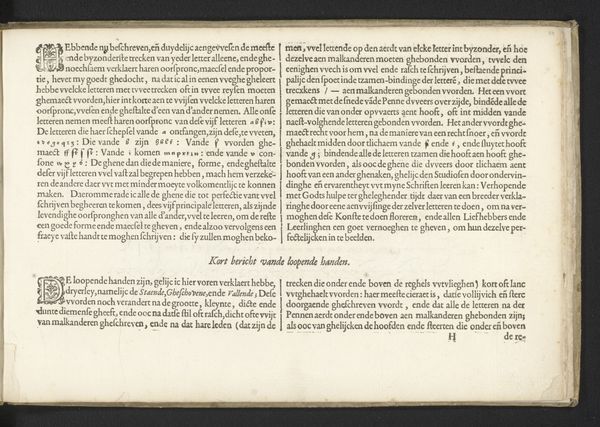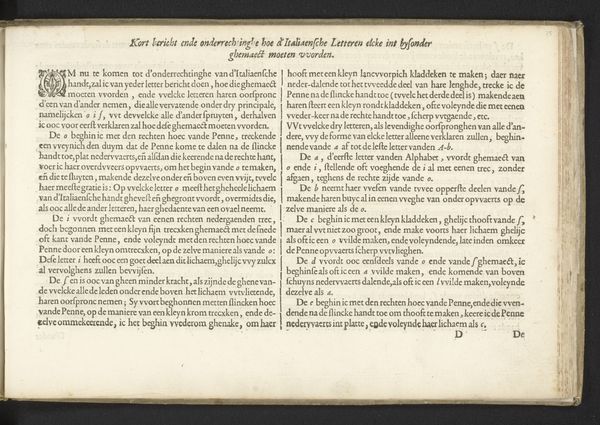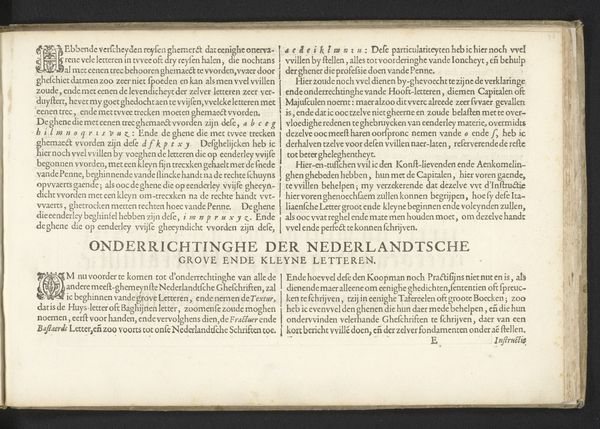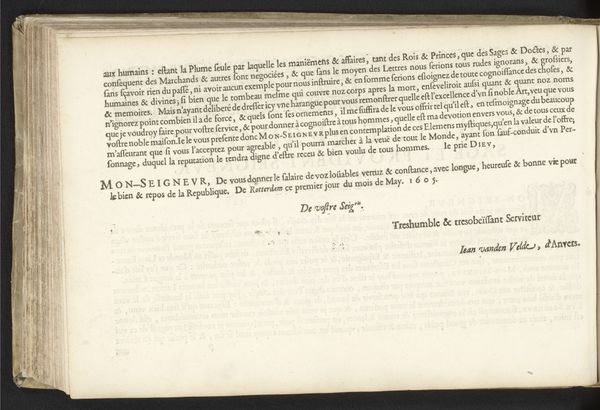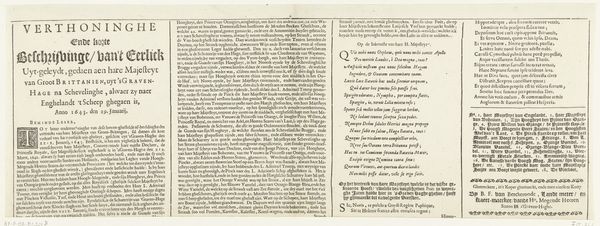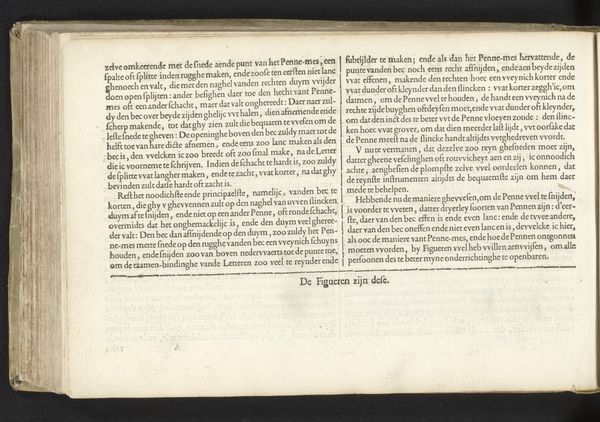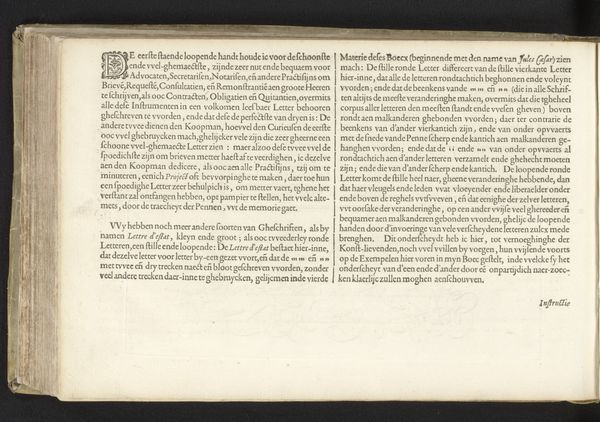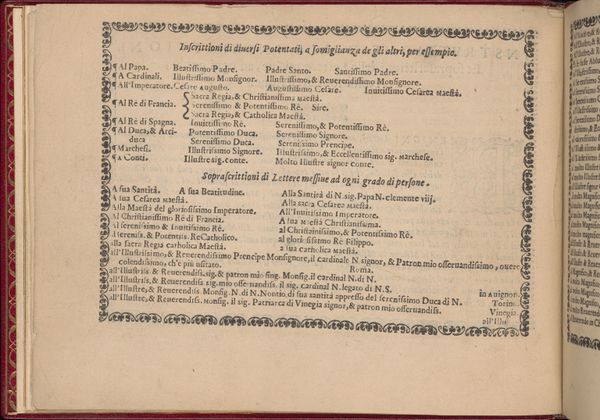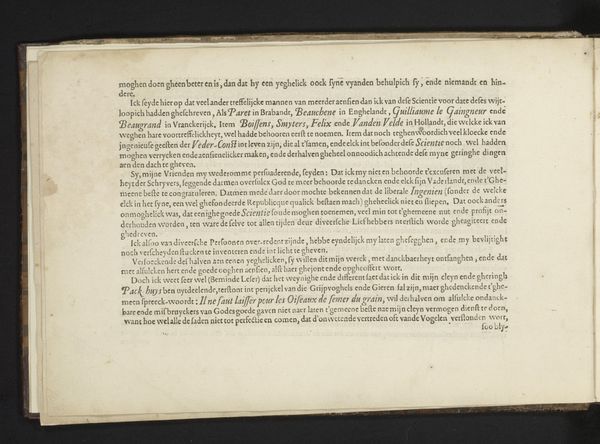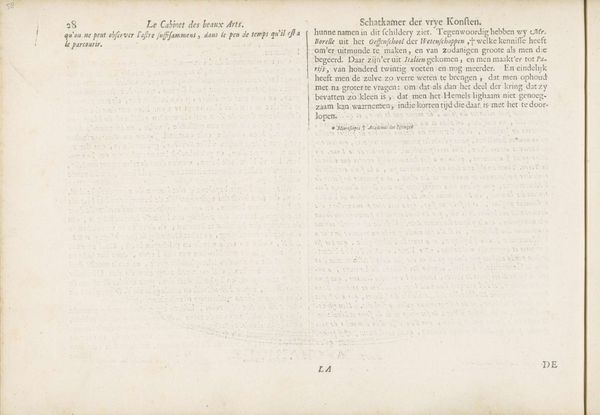
drawing, print, textile, paper, ink, pen
#
drawing
#
medieval
# print
#
textile
#
paper
#
ink
#
pen
#
history-painting
#
calligraphy
Dimensions: height 210 mm, width 315 mm
Copyright: Rijks Museum: Open Domain
Curator: We’re looking at “Instructie hoe de rietpen vastgehouden moet worden (vervolg)”, or “Instructions on how to hold the reed pen (cont.),” a drawing from 1605 by Jan van de Velde I. It's currently held in the Rijksmuseum. Editor: My first impression is of a beautifully organized page. The careful lettering and deliberate arrangement of lines and shapes has an almost meditative quality. What grabs you? Curator: As a historian, I'm intrigued by the instructional nature of this piece. It's a glimpse into the artistic pedagogy of the early 17th century, the precise skills and conventions of handwriting at the time. We can see here how essential particular tools were to particular techniques, shaping how one could represent oneself on the page. Editor: Absolutely, this piece screams process! The careful gradation of shapes alongside their corresponding instructions underscores how essential material practices are for all forms of knowledge. Van de Velde meticulously documents each step. Curator: Right! The very act of writing was deeply tied to social status and literacy rates. By instructing on penmanship, van de Velde plays a part in how this era conceived knowledge hierarchies. Editor: Exactly. And while it’s not overtly discussed here, we could even see the commodification of art skills in these careful instructions, which implicitly raises questions around labor and the role of artisans in spreading different knowledge. Curator: That's a compelling point! The uniformity sought through these techniques hints at an evolving artistic marketplace and the move to democratize craft by distributing information. The shapes, which could almost serve as textiles pattern guides, show how labor could be translated to saleable visual motifs. Editor: And let's consider the raw materials. Paper, ink, and reed pens weren't equally accessible. The act of writing itself embodies both privilege and its performance. To teach penmanship is to circulate access, to an extent, even if it is didactic. Curator: A wonderful intersection between production, consumption, and social role of this drawing, so different from paintings meant to be hung for aesthetics. What this instructional guide highlights for me is how artistic training solidified societal standards. Editor: Agreed. Analyzing this piece through materiality reminds us of the concrete conditions and often obscured labor underpinning so many artistic and, frankly, pedagogical conventions. This, to me, really reveals much about knowledge sharing back then.
Comments
No comments
Be the first to comment and join the conversation on the ultimate creative platform.
